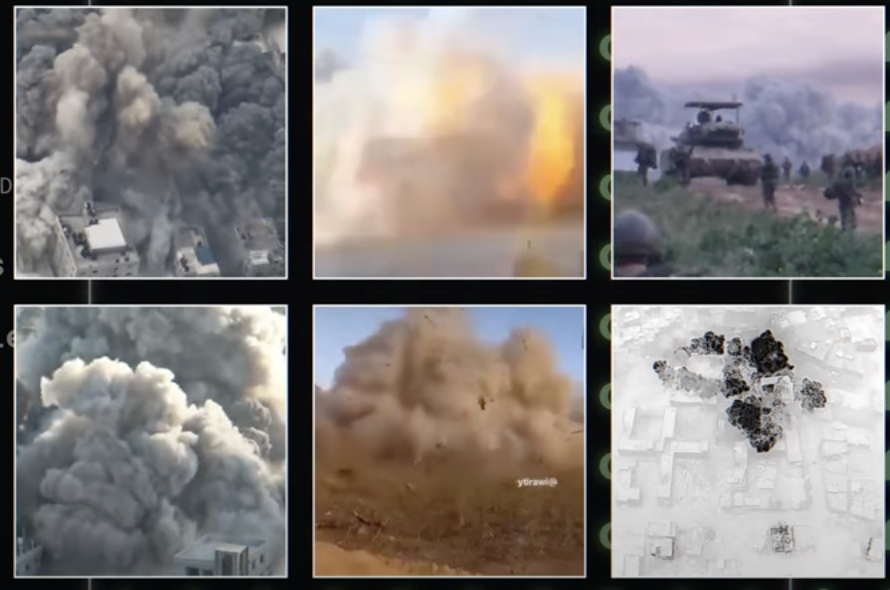In Rafah, Israel Continues to Strike Despite UN Ceasefire Resolution
On Monday, Israel’s Prime Minister Benjamin Netanyahu announced a date had been set for a large-scale Israeli military offensive in Rafah, a city in the far south of the Gaza Strip.
This is despite the fact that approximately 1.5 million people are now sheltering in Rafah, having relocated there following previous orders to evacuate the North of Gaza.
Israel’s top military spokesman Daniel Hagari has said Israel has plans to evacuate Rafah, of which US officials have said they are sceptical. US President Joe Biden has urged Israel against the offensive.
This comes two and a half weeks after the UN Security Council passed a resolution, from which the US abstained, demanding an immediate ceasefire in Gaza. Ramadan ended on Wednesday and will be marked by many in Gaza with Eid al-Fitr.
Bellingcat has geolocated several strikes carried out in Rafah by Israel in the days after the UN resolution. These include strikes in Al Shaboura — an area of Rafah to which the Israel Defense Forces previously instructed displaced people from elsewhere in Gaza to relocate.
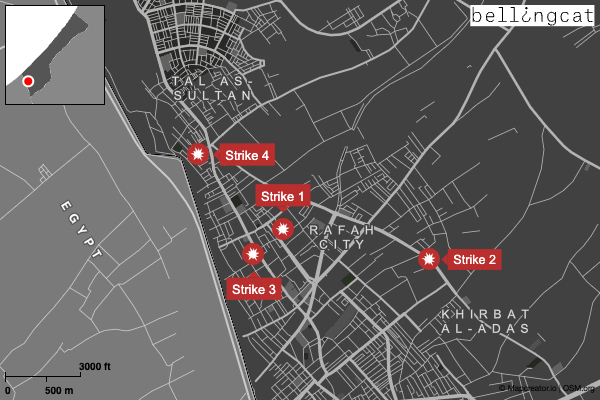
Strikes Follow Ceasefire Resolution: Al Shaboura
On the morning of March 27, two days after the ceasefire resolution, images surfaced online showing the aftermath of an early morning strike in the Al Shaboura neighbourhood.
The minaret of Al Farouk Mosque can be identified in the distant background of the images.
Rafah’s Al Farouk Mosque was destroyed in an Israeli airstrike in February, but the minaret remains standing. A video obtained by Reuters and published on April 10 shows that Eid al-Fitr prayers were subsequently held at the site.
Using the minaret in the distance and surroundings of the house, we managed to geolocate the aftermath of the strike here, to 31.288320, 34.252926 (Strike 1).
Gaza-based journalist, Rabie Abu Noqaira reported that a house belonging to the Al Hamayda family in Al Shaboura neighbourhood was hit in the early hours of the morning of March 27. Whether there were casualties, or their number, remains unclear.

Another location in the Al Shaboura neighbourhood was reportedly hit early on March 27. Footage filmed by Al Kofiya TV showed a severely damaged building located on the corner intersection of two streets.
We matched the facade of the damaged building and the apartment located across the street seen in Al Kofiya’s footage with satellite imagery and located the building here: 31.284967, 34.271340 (Strike 2) roughly two kilometres from the Al Shaboura neighbourhood.
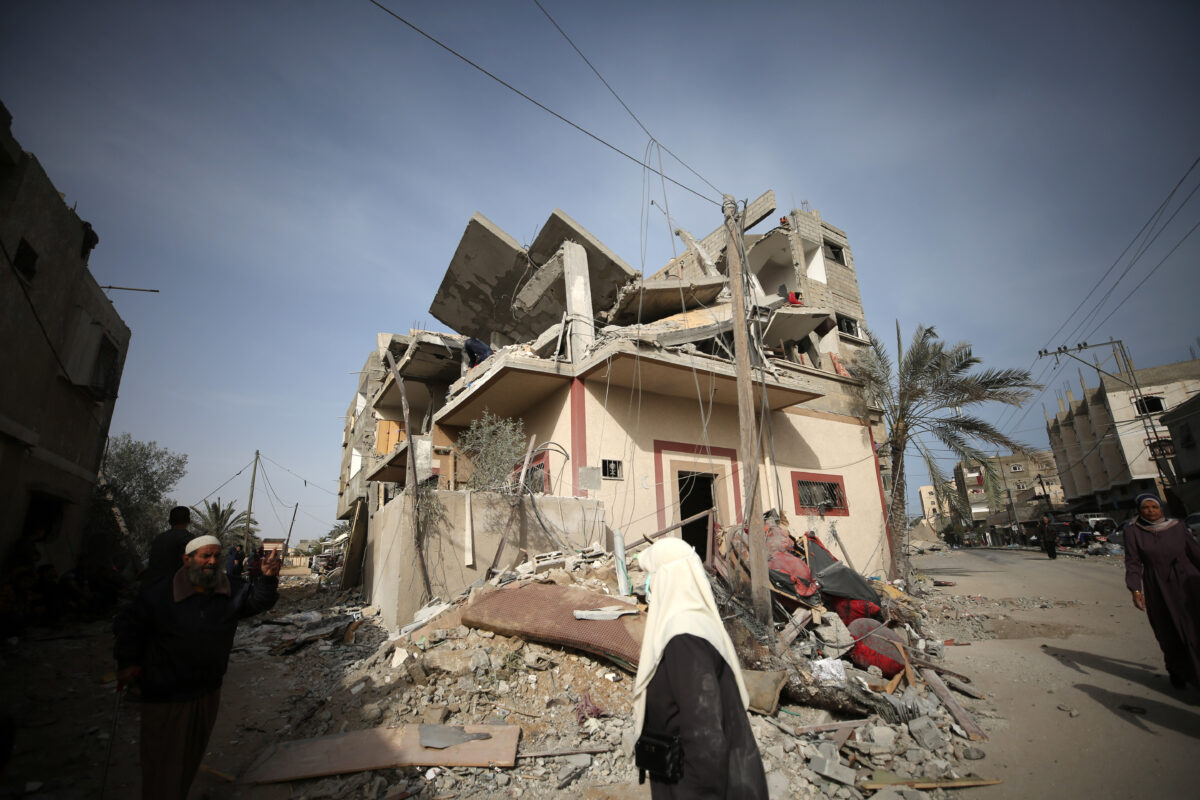

A survivor of the attack interviewed by Al Kofiya TV said that both his parents had been killed, as well as a family of displaced people who were staying there. According to Palestinian news agency Wafa a total of 11 people were killed and several people were injured in the strike.
Al Shaboura is a neighbourhood in Rafah which the Israel Defense Forces previously instructed internally displaced persons from elsewhere in Gaza to relocate to, according to the UN.
According to the UN, on December 3 the Israeli military designated about 20 percent of Khan Younis city for immediate evacuation. Residents of the area, including approximately 50,000 internally displaced persons who had already moved there from elsewhere in Gaza, were instructed to move to Al Fukhari, east of Khan Younis and Ash Shaboura and Tell As Sultan neighbourhoods in Rafah. The UN reported that these neighbourhoods were already overcrowded.
Strikes Near the Egyptian Border
A video published by Reuters on March 27 shows the aftermath of an airstrike in the west of Rafah. Bellingcat geolocated the footage and identified the targeted building here, at 31.285613, 34.249152 (Strike 3).
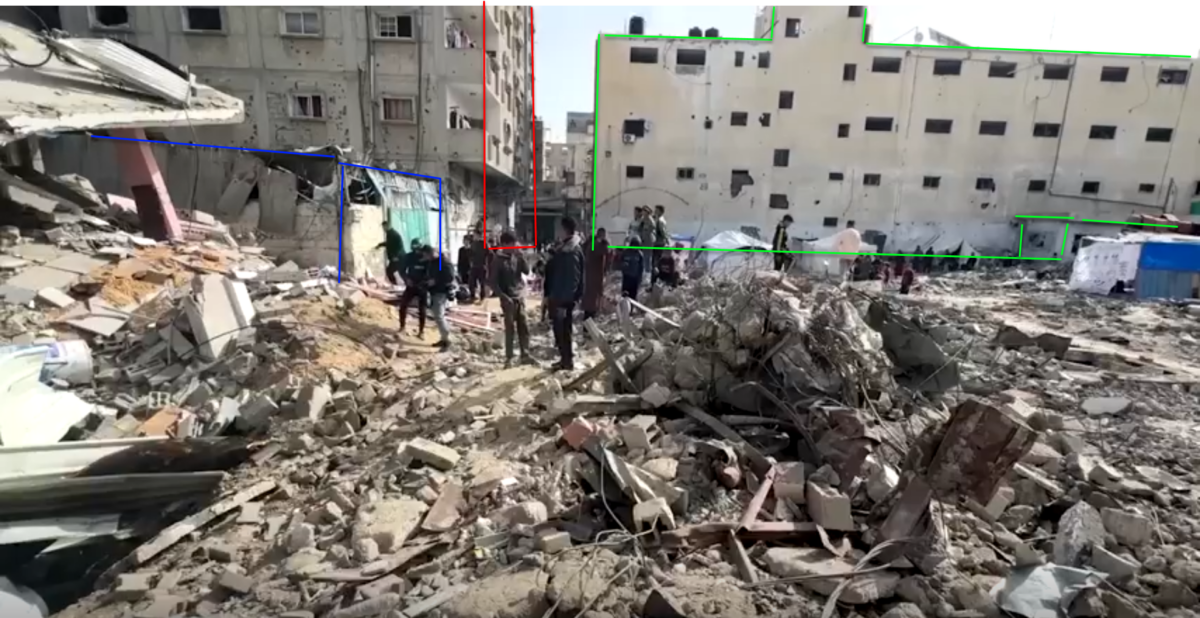

The building outlined in red can be seen again in this video from Al Arabiya. The woman interviewed said her daughter was killed in the strike. The number of casualties in the strike remains unclear.

Bellingcat located an additional strike in the vicinity of the Egyptian border on April 2.
A video posted by Al Jazeera Palestine showed rescue efforts by the Palestinian Civil Defence forces at the scene of a strike on April 2.
Footage shows people carrying away a body from the scene. Several Palestinian news outlets reported that 10 bodies were retrieved from the site.
We were able to geolocate the strike site using a building in the back left of the frame (yellow box) another building (green box) and an alleyway (red box), locating it here: 31.296399, 34.242196 (Strike 4).

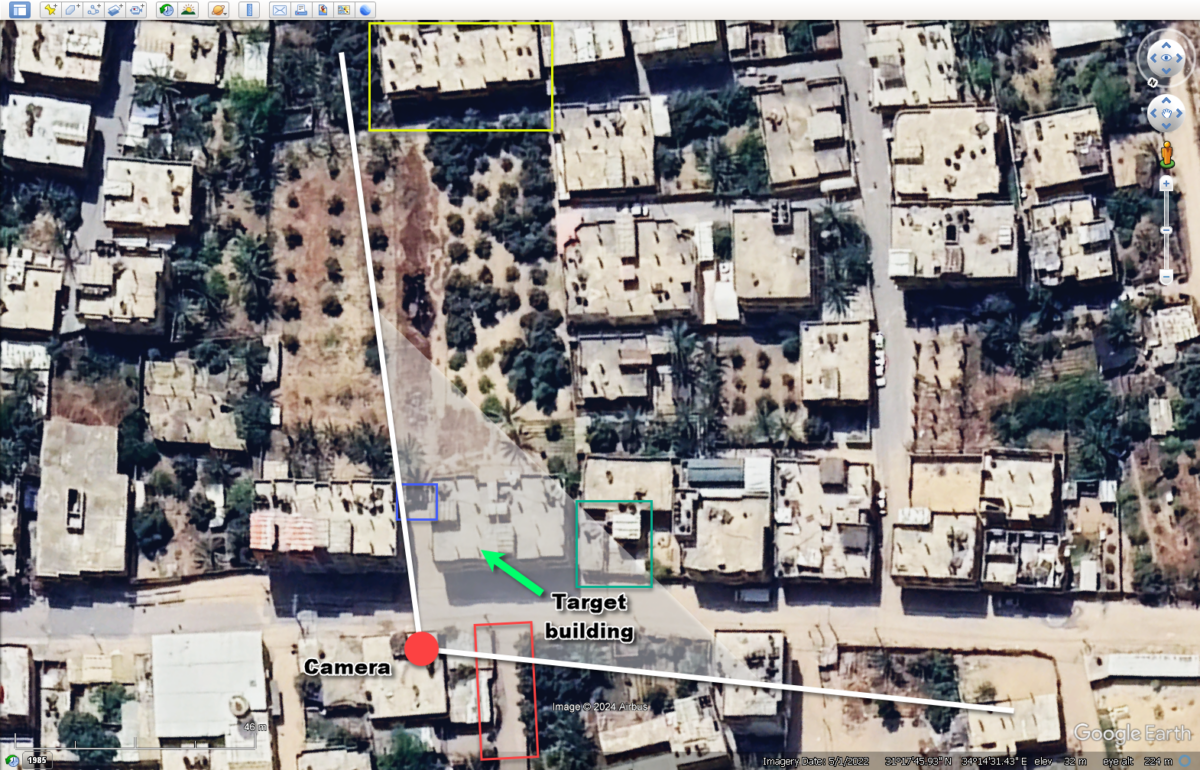
Rafah’s Population Swells with Internally Displaced People
The conflict has seen many people relocate to Rafah, under instruction by the IDF.
While displaced people initially gathered around the United Nations facility and schools in the area north of Rafah, those quickly became overcrowded. Open spaces in northern Rafah started filling up with tents and temporary structures in December.
A previous Bellingcat investigation showed how this surge in displaced people corresponded with the disappearance of trees in areas where makeshift tents had been set up.
An April 9 satellite image from Planet Labs shows that the tents and temporary structures continue to expand near the UNRWA logistics base north of Rafah. In the past two weeks, almost 600 tents have been set up north of the UNRWA facility in the area near 31.326647, 34.251648.
Despite Netanyahu announcing on April 9 that a date had been set for a large-scale Israeli military offensive in Rafah, Israel is yet to share clear plans about how the population will be evacuated.
Israel’s defence ministry reportedly said it had purchased 40,000 tents for the evacuation. Satellite imagery from April 3 and April 9 shows a small collection of new tents organised north of the UNRWA warehouse in Rafah, though it is unclear whether these are the tents referred to by the defence ministry.

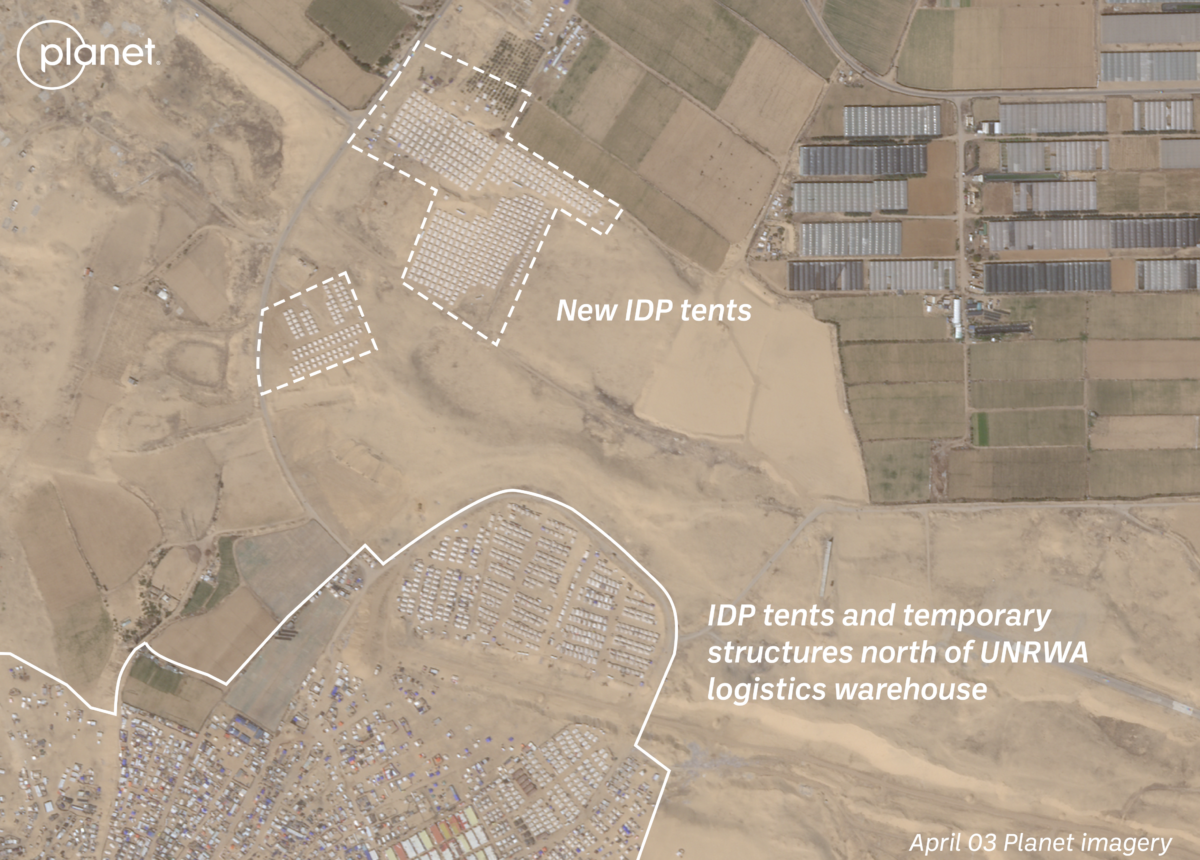
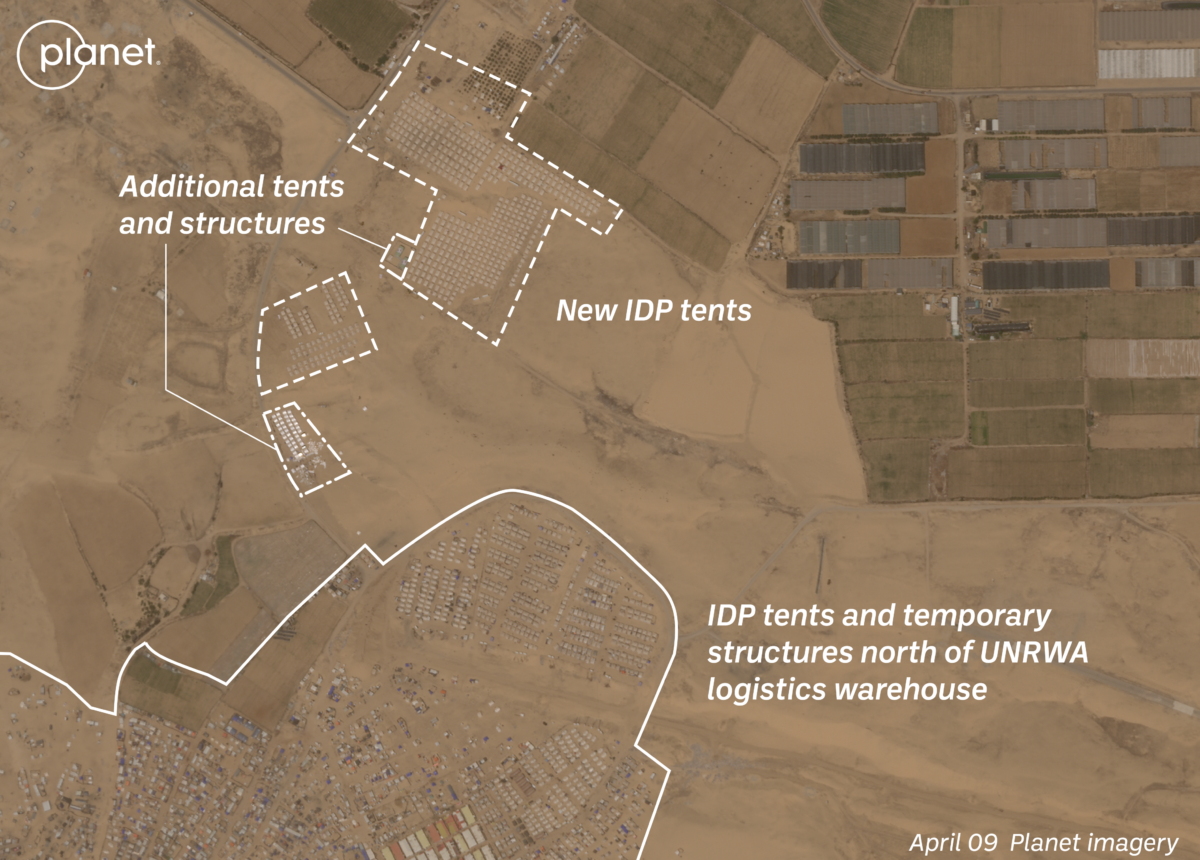
The ceasefire agreement passed by the UN last month called for “an immediate ceasefire for the month of Ramadan respected by all parties leading to a lasting sustainable ceasefire.”
Israeli ministers dismissed the resolution, with Defense Minister Yoav Gallant stating that Israel has “no moral right to stop the war in Gaza until we return all the hostages to their homes.”
During this time Israel has continued to carry out strikes in Rafah. The area now holds approximately 1.5 million people, many who have moved from elsewhere in the Gaza strip. It remains to be seen what options remain for them in the event of a large-scale Israeli offensive.
Jake Godin, Logan Williams and Carlos Gonzales contributed research to this piece.
Bellingcat is a non-profit and the ability to carry out our work is dependent on the kind support of individual donors. If you would like to support our work, you can do so here. You can also subscribe to our Patreon channel here. Subscribe to our Newsletter and follow us on Instagram here, YouTube here, Facebook here, Twitter here and Mastodon here.
